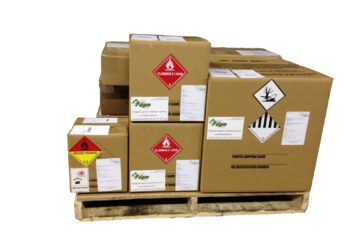How Chatbots Are Changing Supply Chain Management
by Arina Smith Management 10 July 2018

Business software provider SAP advanced the integration of chatbots into supply chain management at this June’s SAP Sapphire conference by showcasing its new chatbot platform SAP Conversational AI (formerly known as Recast.AI). SAP Conversational AI serves as a toolkit for building chatbots that integrate with SAP and non-SAP programs, including supply chain management programs. This move follows on SAP Ariba rolling out its AI supply chain chatbot Procurement, designed to make the supply chain management experience similar to talking to Siri or Alexa.
SAP’s recent emphasis on chatbots highlights a trend that is sweeping through the supply chain industry. The number of supply chain businesses using chatbots more than doubled between 2016 and 2017, and over half of supply chain managers now use chatbot technology, the supply chain, eft’s Hot Trends in Supply Chain 2017 Q2 report found. Here’s a look at some of the ways chatbot adoption is likely to transform the way supply chain management is done.
Connecting Supply Chain Vendors to Customers :
There are a couple major reasons supply chain professionals are adopting chatbots, eft says One is that e-commerce has changed the way B2B and B2C customers interact with supply chains, making the supply chain increasingly the customer’s initial point of contact rather than a retail store. This means that buyers need supply chain details such as cost and inventory levels in order to make purchasing decisions.
Chatbots can help provide this information in an efficient way. For instance, say that a manufacturer needs to restock its supply of Viton o-rings. O-ring vendors such as Apple Rubber provide online tools to provide customers with the information they need to make purchase decisions, such as what sizes are available and whether particular materials have suitable temperature resistance and chemical resistance properties for specific industrial applications. Finding this type of information is a matter of routine procedure and can easily be handled by a chatbot. This saves both vendors and customers time, speeding up the ordering process. Conceivably, the entire process of restocking inventory could be automated by having a buyer’s chatbot check inventory levels and talk to their supplier’s chatbot when restocking is needed.
Improving Internal Customer Service :
Another reason supply chain professionals are adopting chatbots is to improve what eft calls internal customer service, or communication between employees across the various information silos within an organization. For example, someone in a company’s sales department might need to check with the company’s warehouse in order to answer a customer’s question about product inventory levels and availability. A chatbot can automate this process, reducing the amount of time spent on interdepartmental communication.
Chatbots can play a similar role in accelerating other internal communications, such as training and supervision. For instance, say a new employee in the shipping department needs training. Many of the questions the employee asks will be predictable frequently asked questions that could be answered by a chatbot. Using a chatbot to answer these questions would save their human supervisor time while allowing them more time to handle issues that truly require human assistance.
Streamlining the Shipping Process :
Chatbots also help logistics streamline their shipping processes by making vital data readily available, says software development company Jasoren. Daily shipping operations depend on a steady flow of data encompassing customer orders, warehousing, fleet availability and personnel availability. Chatbots can make this information quickly accessible to employees, reducing the human labor required and speeding up the shipping process. ARL-Shipping has introduced a chatbot shipping app that can be used via Facebook to follow cargo en route.
Chatbots can also provide supply chain customers with tracking information about the shipment of their orders. UPS has already rolled out a customer-facing chatbot that works via Google Assistant to provide customers with information about whether their order has shipped and when it can be expected to arrive.
Chatbot technology is making it easier for customers to order directly from suppliers. Chatbots are speeding up internal communication between supply chain personnel, improving the efficiency of sales, training, and supervision. Chatbots are helping logistics companies manage vital shipping data while helping customers track the progress of shipment orders. These benefits help explain the rapid adoption of chatbots by the supply chain industry, and illustrate why chatbots are destined to radically transform supply chain management.







































































































